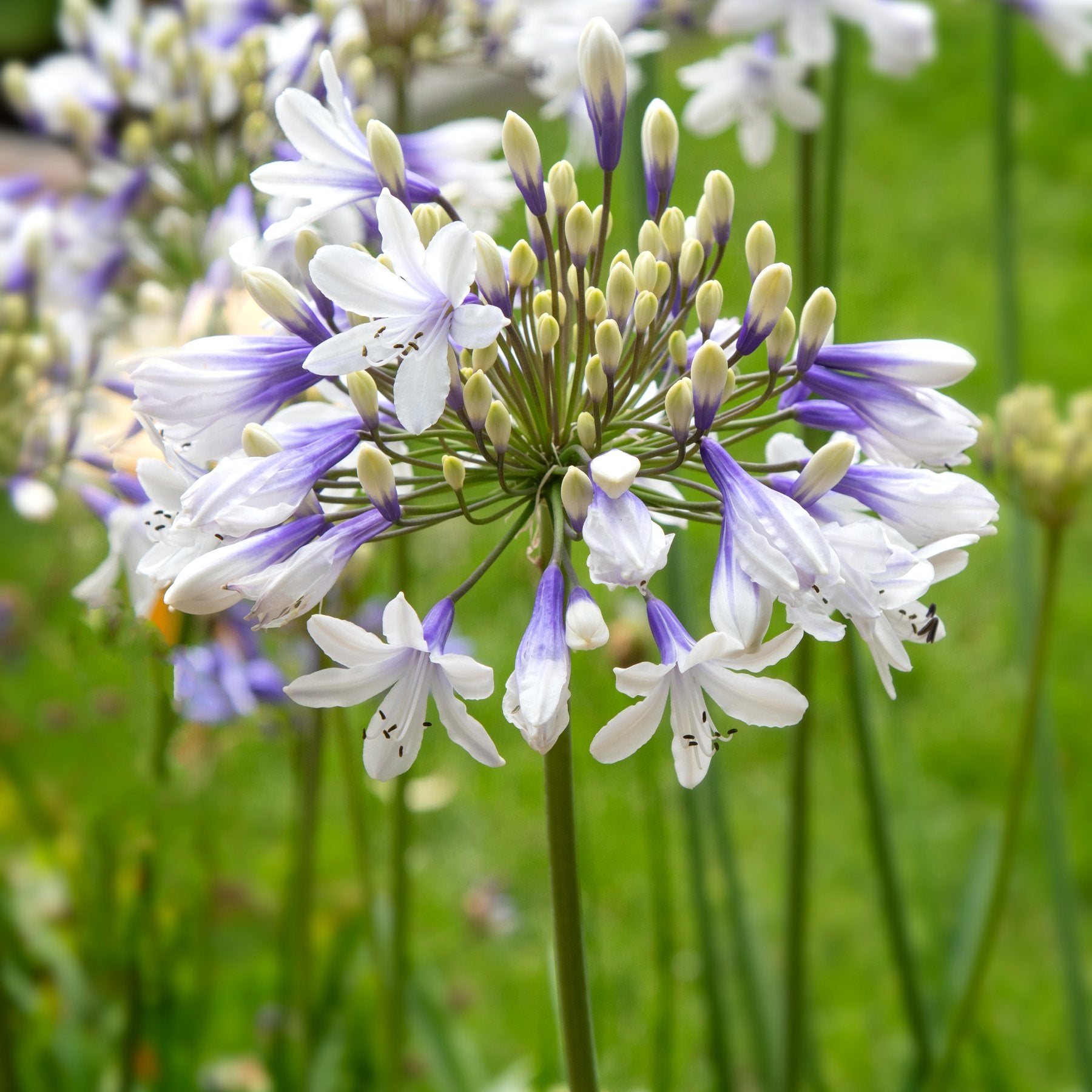Agapanthus Growing Conditions: Soil, Sunshine, and Watering
Agapanthus Growing Conditions: Soil, Sunshine, and Watering
Blog Article
Grasping the Art of Agapanthus Treatment: Crucial Steps for Healthy And Balanced Development and Vivid Blooms
In the world of gardening, the farming of agapanthus stands as a satisfying undertaking for those who seek to nurture these elegant flowering plants. With their striking blossoms and graceful foliage, agapanthus has caught the attention of garden enthusiasts worldwide. However, attaining optimum development and dynamic blossoms needs a nuanced technique that includes numerous essential actions. From picking the right selection to mastering trimming strategies, the trip towards cultivating prospering agapanthus plants is multifaceted and holds the essential to unlocking the complete potential of these organic treasures.
:max_bytes(150000):strip_icc()/agapanthus-growing-guide-7368912_06ba-bf1fa268243b451387986fbd1e2433b3.jpg)
Selecting the Right Agapanthus Selection

When picking the appropriate Agapanthus range for your yard, consider factors such as climate viability, flower shade, and development behavior. Agapanthus, typically referred to as Lily of the Nile or African lily, comes in a variety of shades ranging from tones of purple and blue to white. Pick a flower shade that complements your existing garden palette to develop a harmonious landscape. Furthermore, take into consideration the environment in your region to guarantee the Agapanthus variety you select can grow in your details problems. Some selections are a lot more forgiving of cold temperature levels, while others favor warmer environments. Comprehending the growth behavior of different Agapanthus varieties is essential for proper positioning within your garden. Some selections have a clumping development practice, perfect for containers or boundaries, while others have a more dispersing nature, appropriate for ground cover or mass growings. By carefully reviewing these aspects, you can choose the best Agapanthus range to improve the charm of your yard.
Ideal Growing Conditions
Considering the optimal ecological requirements is crucial for effective Agapanthus growing. Agapanthus flourishes in well-draining dirt with a somewhat acidic to neutral pH level. When planting, choose a place that obtains full sunshine to partial shade. In hotter environments, providing some afternoon shade can protect against scorching of the fallen leaves. Agapanthus plants are sensitive to chilly temperature levels and must be secured from frost during winter season months.
To make certain healthy and balanced development and lively flowers, plant Agapanthus light bulbs at a deepness of about 2-4 inches and area them 8-12 inches apart. Mulching around the base of the plants assists retain wetness and reduces weed growth.
Watering and Fertilizing Tips
Keeping appropriate moisture levels and supplying vital nutrients are crucial elements in the care routine for Agapanthus plants. It is crucial to strike an equilibrium when it comes to sprinkling Agapanthus. If overwatered, these plants prefer constantly moist dirt yet are vulnerable to root rot. During the expanding season, water deeply once a week, ensuring the soil is well-draining to avoid waterlogging. In hotter environments or during durations of drought, more regular watering may be needed to maintain the dirt equally moist. However, lower watering in the wintertime to avoid water logged conditions.
Fertilizing Agapanthus is important for advertising healthy and balanced growth and prolific blossoms. Use a balanced fertilizer, such as a 10-10-10 formula, in the early spring as brand-new development emerges. Repeat this application every 6-8 weeks throughout the expanding period. Stay clear of too much fertilizing, as it can lead to lush foliage at the cost of blooms. Constantly follow the producer's instructions view website for appropriate dilution and application techniques. By following these watering and fertilizing suggestions, you can guarantee your Agapanthus plants grow and create dynamic, durable blooms.
Trimming Strategies for Agapanthus
Pruning Agapanthus plants at the appropriate times and with proper methods is vital for preserving their health and promoting optimum development and flowering. The perfect time to trim Agapanthus is in late winter or very early spring prior to new development arises.
Deadheading invested flowers can also reroute the plant's power into creating even more blooms instead than establishing seeds. If you want to collect seeds for propagation, leave some flowers to completely dry and fully grown on the plant.
Keep in mind to use clean, sharp devices to make exact cuts and lower the danger of presenting conditions. Agapanthus. Regular pruning will certainly help keep your Agapanthus looking healthy and balanced and neat while guaranteeing a plentiful display of lovely flowers
Managing Common Insects and Illness
After guaranteeing correct pruning methods for why not find out more Agapanthus, it is necessary to resolve common insects and diseases that can impact the health and vigor of these plants. One common insect that affects Agapanthus is the Agapanthus gall midge.
Additionally, Agapanthus plants can endure from root rot if they are planted in poorly draining pipes soil. By being vigilant and taking punctual action versus diseases and insects, you can aid your Agapanthus plants thrive Look At This and create vibrant blossoms. Agapanthus.

Verdict
Finally, grasping the art of agapanthus treatment includes selecting the right variety, offering optimal planting conditions, proper watering and feeding, appropriate pruning techniques, and attending to typical insects and diseases. By following these necessary actions, you can guarantee healthy growth and vivid blooms for your agapanthus plants. Remember to consistently check and keep your plants to advertise their total well-being and long life.
To make certain healthy and balanced growth and dynamic flowers, plant Agapanthus bulbs at a deepness of regarding 2-4 inches and space them 8-12 inches apart. By adhering to these watering and fertilizing pointers, you can ensure your Agapanthus plants grow and generate vibrant, lasting blooms.
One usual bug that impacts Agapanthus is the Agapanthus gall midget. In addition, Agapanthus plants can suffer from origin rot if they are planted in poorly draining soil. By adhering to these necessary steps, you can ensure healthy growth and lively blooms for your agapanthus plants.
Report this page